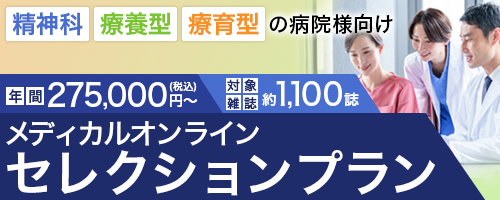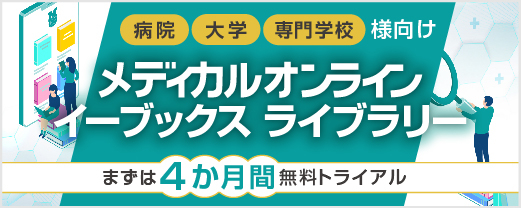アブストラクト
Japanese
| Title | 舌骨上筋群に対する訓練方法の違いが嚥下関連筋群の筋活動量に及ぼす影響 |
|---|---|
| Subtitle | 原著 |
| Authors | 岡野雄二1,2), 福岡達之3), 橋本幸成4), 坂口紅美子5), 奥田正作6), 丸吉康太1) |
| Authors (kana) | |
| Organization | 1)医療法人清仁会水無瀬病院リハビリテーション部, 2)医療法人同仁会京都九条病院リハビリテーション部, 3)広島国際大学総合リハビリテーション学部リハビリテーション学科言語聴覚療法学専攻, 4)目白大学保健医療学部言語聴覚学科, 5)日本医科大学付属病院リハビリテーション科, 6)明治国際医療大学保健医療学部柔道整復学科 |
| Journal | 日本摂食嚥下リハビリテーション学会雑誌 |
| Volume | 29 |
| Number | 1 |
| Page | 3-10 |
| Year/Month | 2025 / 4 |
| Article | 原著 |
| Publisher | 日本摂食嚥下リハビリテーション学会 |
| Abstract | 「要旨」【目的】本研究では, 開口運動, 頭頸部屈曲運動とそれぞれに抵抗を加えた4種類の訓練課題を用いて, 舌骨上筋群に対する訓練方法の違いが嚥下関連筋群の筋活動量に及ぼす影響について検討することを目的とした. 【方法】健常成人33名(男性20名, 女性13名), 平均年齢33.8±6.9歳を対象とした. 方法は, 開口訓練(Jaw opening exercise: JOE), 開口抵抗訓練(Resistive jaw opening exercise: RJOE), 頭部挙上訓練(Head lift exercise: HLE), 嚥下おでこ体操, の4種類の訓練課題を行った時の舌骨上筋群, 舌骨下筋群および胸鎖乳突筋の筋活動を表面筋電図で記録した. 各訓練課題の運動開始から終了において, 安定した等尺性収縮の5秒間を解析区間とし, 各被験筋の筋電波形から最大振幅値と平均振幅値を算出した. 【結果】舌骨上筋群の最大振幅値および平均振幅値はRJOEが最も高い値を示し, JOEおよびHLEとの間に有意差はなかったが, 嚥下おでこ体操との間で有意差を認めた. 舌骨下筋群および胸鎖乳突筋の最大振幅値および平均振幅値ではHLEが最も高く, RJOEおよびJOEとの間で有意差を認めた. 【結論】開口運動を利用した訓練法(JOE, RJOE)では, 舌骨上筋群の筋活動が高い一方で, 舌骨下筋群や胸鎖乳突筋の活動は低かった. 頭頸部屈曲運動を利用した訓練法(HLE, 嚥下おでこ体操)では, 舌骨上筋群, 舌骨下筋群だけでなく, 胸鎖乳突筋の活動も高かった. 訓練方法によって舌骨上筋群, 舌骨下筋群, 胸鎖乳突筋の活動は異なるため, 嚥下関連筋群への筋力増強訓練を行う際には, 症例の嚥下障害の状態と身体能力に応じ, 開口運動と頭頸部屈曲運動を利用する訓練法の選択, または組み合わせて実施することで, 効果的な嚥下リハビリテーションの提供が可能になると考える. |
| Practice | 医療技術 |
| Keywords | 嚥下訓練, 舌骨上筋群, 舌骨下筋群, 胸鎖乳突筋, 表面筋電図, dysphagia exercise, suprahyoid muscle, infrahyoid muscle, sternocleidomastoid muscle electromyography |
English
| Title | Effects of Different Training Methods on the Muscle Activity of Swallowing-related Muscle Groups |
|---|---|
| Subtitle | |
| Authors | Yuji OKANO1,2), Tatsuyuki FUKUOKA3), Kosei HASHIMOTO4), Kumiko SAKAGUCHI5), Shosaku OKUDA6), Kota MARUYOSHI1) |
| Authors (kana) | |
| Organization | 1)Department of Rehabilitation, Seijinkai Medical Corporation, Minase Hospital, 2)Department of Rehabilitation, Dojinkai Medical Corporation, Kyoto Kujo Hospital, 3)Major in Speech-Language-Hearing Therapy, Department of Rehabilitation, Faculty of Rehabilitation, Hiroshima International University, 4)Department of Speech, Language and Hearing Therapy, Faculty of Health Sciences, Mejiro University, 5)Department of Rehabilitation, Nippon Medical School Hospital, 6)Faculty of Judo Seifuku Therapy, Meiji University of Integrative Medicine |
| Journal | The Japanese Journal of Dysphagia Rehabilitation |
| Volume | 29 |
| Number | 1 |
| Page | 3-10 |
| Year/Month | 2025 / 4 |
| Article | Original article |
| Publisher | The Japanese Society of Dysphagia Rehabilitation |
| Abstract | [Abstract] The purpose of this study was to investigate the effects of different training methods for the suprahyoid muscles on the amount of muscle activity of the swallowing-related muscles in a training task utilizing jaw opening movements and head and neck flexion. Method: Thirty-three healthy adults (20 males, 13 females; mean age 33.8+-6.9 years) were included in the study. The method consisted of four types of training exercises: jaw opening exercise (JOE), resistive jaw opening exercise (RJOE), head lift exercise (HLE), and forehead exercise for suprahyoid muscles. The muscle activities of the suprahyoid and infrahyoid muscles, and sternocleidomastoid muscles were recorded with a surface electromyograph during the four training exercises. The 5-second period from the start to the end of each training task was used as the analysis interval, and the maximum and average amplitude values were calculated from the EMG of each muscle under test. Results: The RJOE exhibited the highest maximum and mean amplitude values for the suprahyoid muscles, with no significant difference between the RJOE and the HLE, but there was a significant difference between the RJOE and the swallowing forehead exercises. HLE had the highest maximum and mean amplitude values for the suprahyoid muscles and sternocleidomastoid muscles, with significant differences between RJOE and JOE. Conclusions: In training methods utilizing jaw opening exercises (JOE, RJOE), muscle activity of the suprahyoid muscles was high, while that of the infrahyoid muscles and sternocleidomastoid muscles were low. In training methods involving head and neck flexion (HLE, swallowing forehead exercises), not only the suprahyoid and infrahyoid muscles but also the sternocleidomastoid muscles were more active. Because the activities of the suprahyoid and infrahyoid muscles, and sternocleidomastoid muscles differ depending on the training method, effective swallowing rehabilitation can be provided by selecting or combining training methods that utilize jaw opening and head and neck flexion exercises, depending on the dysphagia status of the patient when strength training is performed on the swallowing-related muscles. This will enable the provision of effective swallowing rehabilitation. |
| Practice | Medical technology |
| Keywords | dysphagia exercise, suprahyoid muscle, infrahyoid muscle, sternocleidomastoid muscle electromyography |
- 全文ダウンロード: 従量制、基本料金制の方共に770円(税込) です。



